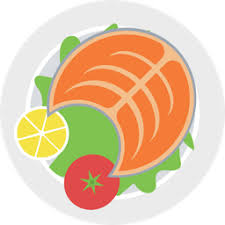Oils and fats contain fundamental unsaturated fats — omega 3s and 6s, specifically — that are essential for the design of each and every phone in the body, says Walter Willett, teacher of the study of disease transmission and sustenance at the Harvard T.H. Chan School of Public Health. They’re the structure squares of chemicals, assist with diminishing irritation, and lower awful cholesterol and pulse. Oil additionally gives taste and satiety.
The key is knowing the right kind to utilize. It’s more straightforward while you’re cooking at home, a little trickier while you’re eating out and you have no control over each progression simultaneously. Yet, it’s not just about picking the best oils. They have an influence on a solid eating regimen when they’re important for an eating plan that limits handled food varieties, basic starches, and sugar.
Healthy and not-so-healthy oils
As a rule, Willett says that the best oils are fluid and plant-based. The one that strikes a chord initially is olive oil and for good explanation. “It’s endured for an extremely long period,” he says. It assists lower with blooding cholesterol and gives cancer prevention agents, and additional virgin is the best adaptation, as it’s the main squeezing and least refined.
From that point forward, corn, canola, sunflower, safflower, and soybean the entire fall into the solid section. The last one wasn’t generally viewed as a solid decision since it used to be hydrogenated, however presently it’s in a characteristic state and a decent source, says Willett.
On the unfortunate side, there’s fat, margarine, palm oil, and coconut oil. The shared trait is that they arrive in a semi-strong state and have an elevated degree of soaked fat. The utilization of that fat builds LDL cholesterol (the terrible kind) and has been related to an expanded risk for cardiovascular sickness and diabetes.
Willett expresses some portion of the test is social. Northern European custom depends on eating creatures and creature fats, and those fats, similar to margarine and grease, come in strong structure. The Southern European methodology, similar to the Mediterranean eating routine, depends on plant-based oils, especially olive.
While soaked fats give nothing unless there are other options referenced medical advantages, they don’t need to be stayed away from totally, just limited to 5% of your eating regimen, says Willett. For instance, assuming you regularly consume 2,000 calories per day, just 100 ought to come from soaked fats.
Eating out versus at home
Assuming you’re eating at home and you’re utilizing sound oils, there is less worry about consuming some unacceptable fats or to an extreme. Whether you’re broiling, sautéing, or dressing a serving of mixed greens, you’re in charge of the multitude of elements. Utilizing an excess of oil isn’t such a worry, Bhupathiraju says, since individuals normally control their admission by realizing when something will taste excessively slick.
Searing, by and large, is in many cases a concern, yet all the same, it’s not really unfortunate. It’s more about what’s being broiled. Cheddar, an immersed fat, wouldn’t be an incredible decision, however, zucchini wouldn’t be awful, as Bhupathiraju says.
The worry with seared food varieties, and eating out as a general rule, sort of oil is being utilized and how. With profound fryers, in the event that the oil isn’t consistently different, it over and again gets warmed and trans fats are made. These can create irritation in the body, which can prompt coronary illness, type 2 diabetes, and adds to the breakdown of cell layers.
The most straightforward move is to try not to eat every single seared food. Yet, that’s what Willett says, once more, that is excessive all of the time. The utilization of trans fats was disallowed in 2018, so it’s probable an eatery is utilizing a better oil. All things considered, eating broiled food varieties at times isn’t excessively destructive.
Zero in on keeping a solid eating routine, with great oils
Willett says that individuals get most of their calories from two sources — fats and sugars — and “what’s significant is both ought to be sound,” he says.
At the point when you eat sound carbs and fats, you don’t need to stress over the amount you’re eating by the same token. “The proportion doesn’t have a lot of effects. They’re both sound,” he says. The emphasis is on generally speaking eating. A sound eating regimen can comprise of for the most part entire grains like earthy colored rice, steel-cut oats, wheat berries, and quinoa. The less something is processed and made into a powder, the more leisurely it will deliver into the body, forestalling abrupt spikes in glucose.
While low-fat eating regimens had some prevalence during the 1990s, low-fat items aren’t better. Willett says that examination has shown that low-carb eat fewer carbs are more successful for weight reduction than low-fat ones, and that low-fat eating regimens are not more compelling for weight reduction than higher-fat ones.
The best way to deal with eating great is the science-upheld suggestion of having heaps of varieties on your plate. Orange, yellow, green, and red food sources supply different cell reinforcements and phytochemicals that might be defensive to the body. At the point when you make your eating regimen like this, odds are good that you’ll eat all the more leisurely and consume fewer vacant calories.
